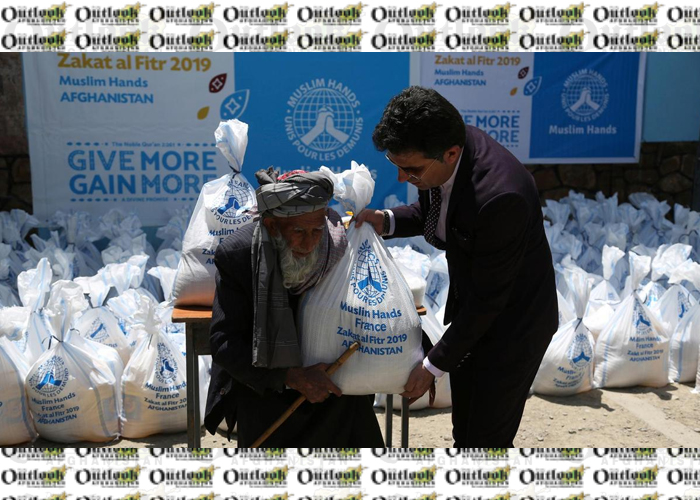Persistent insecurity and instability have influenced Afghanistan in various ways. Prominent among these influences is the continuous decline of standard of living for the people. The common people are influenced to the extent that they now suffer because of the dearth of the most rudimentary requirements of life. Though insecurity has dominated the scenario, the social and economic lives of the people are more influenced by poverty and unemployment. This year the situation has further deteriorated because of the COVID-19 pandemic, which the country has no capacity to deal with. The result is that the people are not able to even feed themselves and their children, which is the worst scenario for a society to go through. The phenomenon has led to an ever-worsening situation of food security around the country, which is alarming the bells now and can raise serious challenges for the coming year – 2021.
United Nations Office for the Coordination of Humanitarian Affairs’ (UNOCHA) report – Afghanistan: Humanitarian Needs Assessment 2021 – shows that ‘the food security situation in Afghanistan has steadily deteriorated with the percentage of food insecure people doubling (from 37 per cent in September 2015 to 76 per cent in November 2020), while the proportion of people in crisis or emergency levels of food insecurity has increased more than five-fold (from 8 per cent to 42 per cent over the same period)’. The data shows disturbing numbers – 42 percent of the people (around 16.9 million) suffering from food insecurity at emergency levels is threatening situation for a country that has many other issues to deal with simultaneously. It is also imperative to consider that this situation is going to influence women and children the most, as they are the most vulnerable strata of the society.
UNOCHA’s report highlights that ‘almost half of children under five need life-saving nutrition support, as do a quarter of pregnant and lactating women (PLW)’, at a time when both the strata are suffering from lack of attention. Nutritional deficiencies in women and children are then destined to influence the families as a whole, as they give rise to myriads of diseases in the areas where the health facilities are almost non-existent.
The reasons for the increasing food insecurity revealed in the report are food insecurity, forced displacement, low access to health services, and poor access to water and sanitation, which create nutritional deficiency among the people, especially in children. It, however, also claims that ‘the economic and social conditions created by the COVID-19 pandemic have also exacerbated protection risks for vulnerable families, many of whom had already depleted limited financial, mental, and social coping capacities due to prolonged conflict or recurrent natural disasters.’ The series of unfortunate events, nevertheless, does not stop here, as the report says that ‘the additional stress from the pandemic has pushed households to adopt negative coping mechanisms, including increasingly requiring children to work or marry to offset financial burdens.’
Meanwhile, in Afghanistan, the agricultural sector has been unable to meet people’s requirements because the relevant authorities have not given the sector adequate attention. Therefore, the sector relies heavily on farmers and landowners in general, most of whom grow as much as their own requirements. In addition, the growth of poppy on cultivatable lands leaves little space to produce other important crops capable of fulfilling people’s food requirements. Wheat was once one of Afghanistan’s most dominant crops that served as the basic food item, but the weather and lack of water affected its growth. Other goods, especially vegetables, such as beans and maize have also been affected mostly by lack of attention and fluctuation in prices. Thus, a sector that could otherwise play a role in fighting increasing challenges of food insecurity is being neglected altogether.
Though the situation is drastic in its current form, it is bound to generate more challenging circumstances in the year to come. The UNOCHA’s report predicts: “The deteriorating context and an increase in population estimates (now 40.4 million people) have combined to leave a projected 18.4 million people in humanitarian need in 2021, up from 14 million people in June 2020 and 9.4 million in January 2020. This increase is driven by the social, economic and health impacts of COVID-19, high cross-border mobility, spiralling food insecurity and malnutrition, as well as conflict-driven displacement and protection needs.” Particularly, the ongoing winter season will further complicate the situation by creating bearers to reach the needy people in winter-stricken parts of the country till the month of April next year. Moreover, with no prospects of peace and stability in sight, it is difficult to imagine how the country is going to face the challenges next year.
Moreover, it must not be forgotten that though the scarcity of food itself is a huge problem, numerous other problems are related to psychological and social stress that emanates from it. In order to feed themselves and their loved ones, more people will engage in crimes and even terrorism, thus providing fuel to both the evils.
In the light of such a deplorable context, it is imperative that we must secure more funding and resources to better equip ourselves. We must also make sure that the funding and resources are utilized in the best possible manner with minimum involvement of corruption. At the same time, we must strive to utilize our own resources, particularly, the relevant authorities in the country require to improve the agricultural sector, which can make us self-sufficient to a certain extent and fight the worsening food security.
Home » Opinion » Deteriorating Food Security in Afghanistan
Deteriorating Food Security in Afghanistan
| Sajjad Aasim

